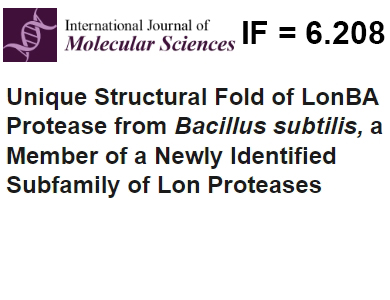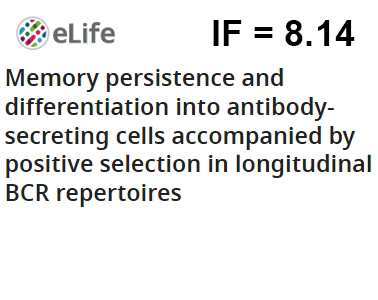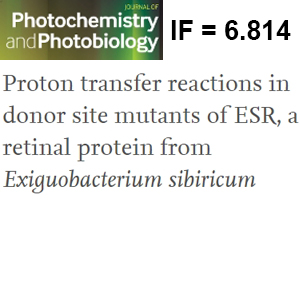Press-room / Digest

Unique Structural Fold of LonBA Protease from Bacillus subtilis, a Member of a Newly Identified Subfamily of Lon Proteases
In the study of ATP-dependent Lon proteases – key members of the cellular proteome quality control system, scientists from the Laboratory of Proteolytic Enzyme Chemistry of IBСh RAS in collaboration with colleagues from the National Cancer Institute (Frederick, USA) revealed a group of enzymes that bear structural features of participants of both previously studied basic LonA and LonB subfamilies. These enzymes were proposed to consider as a new "hybrid" LonBA subfamily. The protease (P) domain of LonBAs has a unique among Lon family fold as it was shown by 3D analysis of the enzyme from Bacillus subtilis (BsLonBA). The experimentally solved P domain structure was combined with the structure of the BsLonBA ATPase component modeled using the AlphaFold2 program. The predicted structure of full- length BsLonBA was compared with the known structures of LonA and LonB proteases. Possible peculiarities of the LonBA proteases functioning are discussed. The work was published in the International Journal of Molecular Sciences.

Longitudinal profiling of human peripheral blood B cell clonal repertoire: memory B cell persistence and signs of negative and positive selection at the BCR repertoire level
Persistence of B cell clones and fine-tuning of their BCRs allow them to respond effectively to repeated immune challenges. Researchers from the Genomics of adaptive immunity department of IBCH in collaboration with colleagues from IITP and Skoltech, performed long-term study of structure and dynamics of BCR repertoire of memory B cells and antibody-secreting cells from peripheral blood of healthy donors. Memory B cell BCR repertoire have distinctive features, relatively stable over time and largely unique to independent donors. Phylogenetic approach for BCR repertoire analysis showed evidence of positive and negative selection affecting affinity maturation after reactivation as well as protection of BCR functionality and antigen- specificity persisting memory clones. The study published in eLife.

A Uniquely Stable Trimeric Model of SARS-CoV-2 Spike Transmembrane Domain
Tools created at the Laboratory of Biomolecular Modelling IBCh RAS have been brought together into a computational framework to build a model of SARS-CoV-2 spike transmembrane domain (TMD). Apart from template-based modelling, the framework relies on the molecular hydrophobicity potential (MHP) analyser Platinum, dimer prediction utility PREDDIMER and the adjustment of ‘dynamic MHP portraits’ observed during molecular dynamics simulations. The final model, the only existing one taking into account the lipid environment and helical TMD packing principles, demonstrated phenomenal stability in a model membrane, both on its own and palmitoylated downstream, proving to be stabler than alternative models and a recent NMR structure. The results are published in the International Journal of Molecular Sciences. Learn more

Impact of Exogenous Application of Potato Virus Y-Specific dsRNA on RNA Interference, Pattern-Triggered Immunity and Poly(ADP-ribose) Metabolism in Potato Plants
Methods for inhibition of viral infection induced by spraying plants with preparations of specific double-stranded RNAs (dsRNAs) are currently being actively developed. Researchers from the Laboratory of functional genomics and plant proteomics, the Laboratory of Molecular Diagnostics and the Laboratory of Molecular Bases of Plant Stress Resistance of the Institute of Bioorganic Chemistry RAS studied the contribution of potato plant treatment with dsRNA against potato virus Y (dsRNA-PVY) to two dsRNA-induced plant defense mechanisms: specific RNA interference (RNAi) and non-specific pattern-triggered immunity (PTI). It has been shown that application of PVY dsRNA in potato plants induced accumulation of both small interfering RNAs (siRNAs), a hallmark of RNAi, and some gene transcripts related to PTI. The results are published in the International Journal of Molecular Sciences. Learn more

Proton transfer reactions in donor site mutants of ESR, a retinal protein from Exiguobacterium sibiricum
Microbial rhodopsins are integral membrane proteins that contain the retinal chromophore and perform light-dependent ion transport or other functions. The interest in them is largely explained by the perspectives for use in optogenetics in order to regulate the neuronal activity, including for the treatment of various diseases. A team of scientists from the Laboratory of protein engineering and the Group of nanobioengineering of the ICBh RAS has been studying the rhodopsin from Exiguobacterium sibiricum (ESR) for many years. The presence of a lysine residue at position 96 corresponding to the internal proton donor for the Schiff base distinguishes it from bacteriorhodopsin (BR), the most studied retinal protein. In a new study, carried out in collaboration with colleagues from other Russian and foreign institutions, authors have shown that Asp or Glu residues in this position effectively perform the function of a donor in the ESR molecule. However, the kinetics of the photocycle and charge transfer in mutants differ significantly from BR, indicating an alternative mechanism for reprotonation of the Schiff base in ESR. The results are published in the J Photochem Photobiol B.

